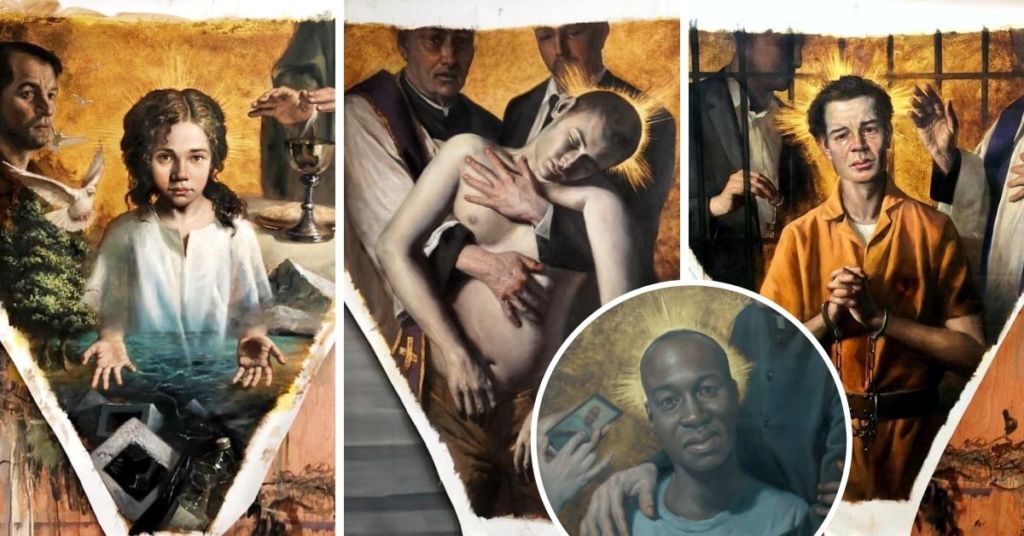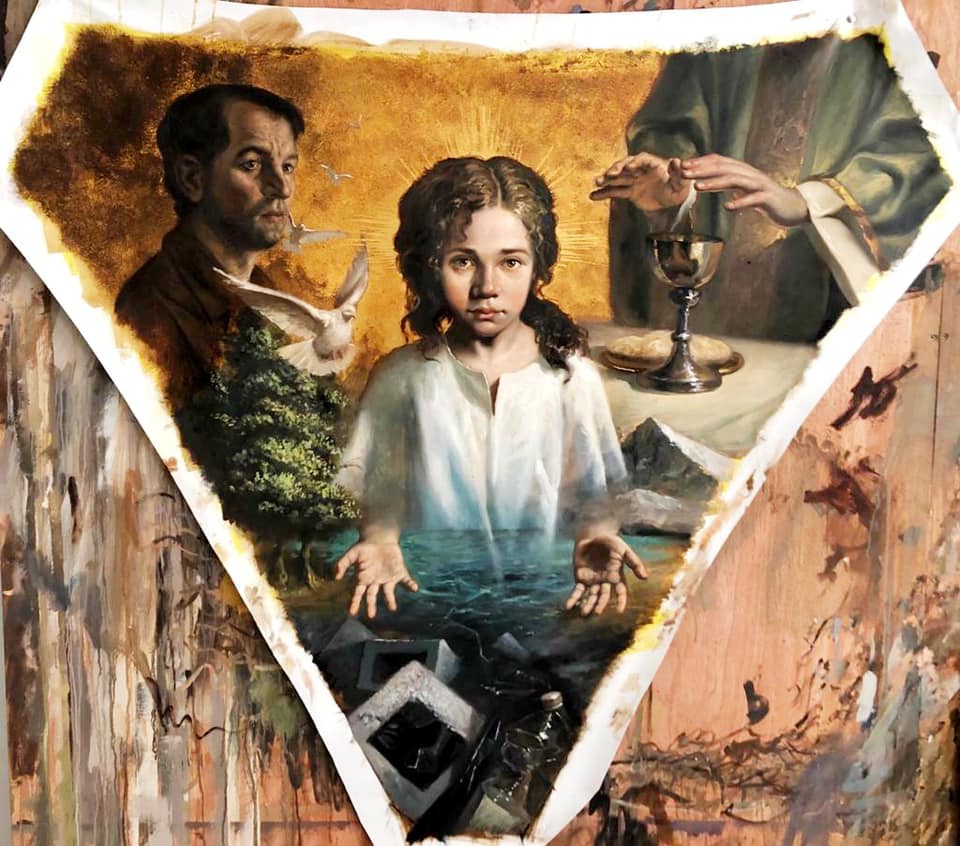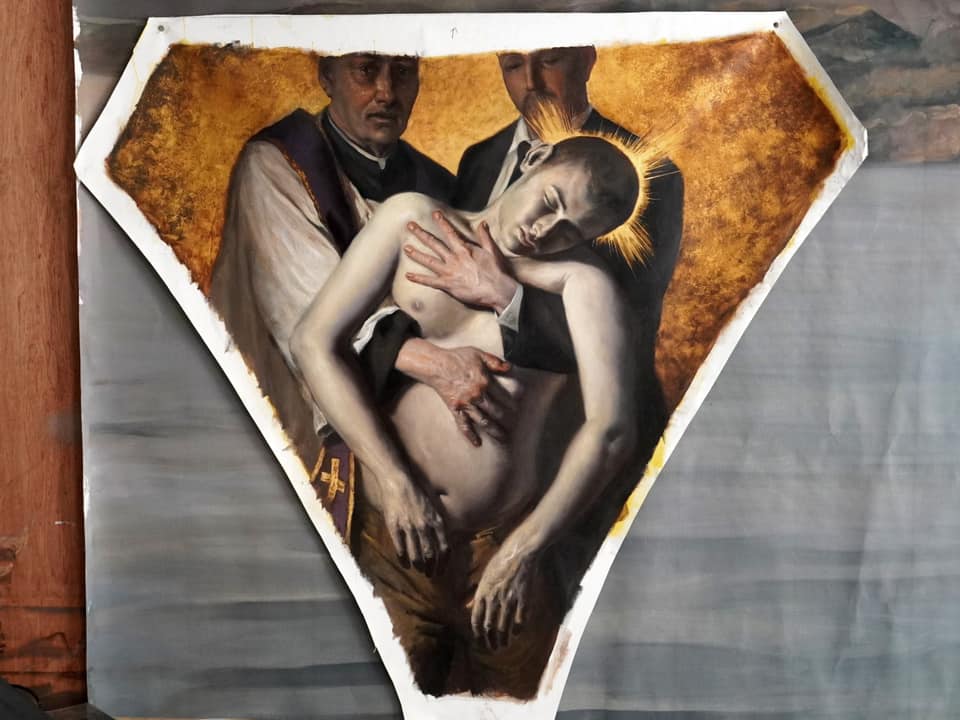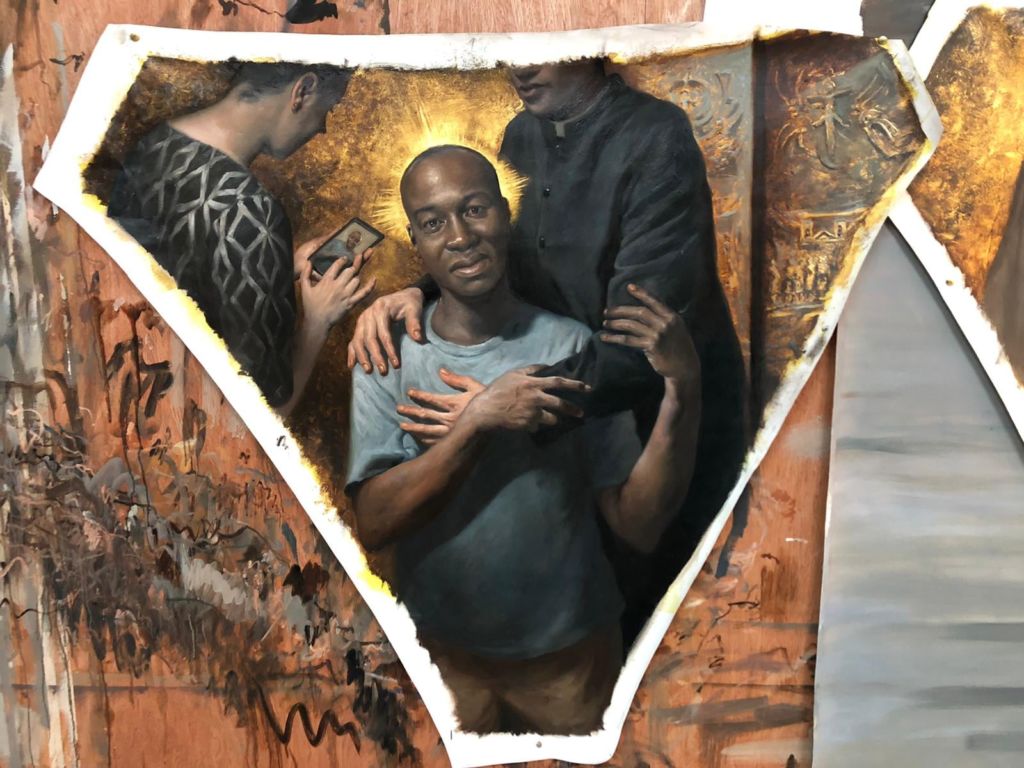Lassana Cisse And Beyond: Gozo Church’s Acts Of Mercy Series Is Essential Viewing

A series of paintings in a stoic Gozitan church has led to a national discussion about how Malta’s citizens treat its most vulnerable.
St George’s Basilica in Victoria, Gozo unveiled their Acts of Mercy series – eight portraits meant to show some of the poorest segments of people living in Malta, and how both society as well as the church react to them.
The painting of Lassana Cisse, the father of two murdered in cold blood in Ħal Far in what is suspected to be a racist attack, represented the Foreigner – someone who came from overseas with hopes and dreams of a better life, hoping to find safety and peace in Malta.
The work, by artist Manuel Farrugia, has already been praised as probably the most important piece of local art to emerge over the last decade.
1. Natural Creation
Nature is represented through the land, mountains, sea, trees and birds. In the centre, an innocent girl represents the synthesis and depth of creation.

2. The Dead
Death is a fundamental event part of every human’s life. But Christian faith says that death is not the end of things. The central figure shows a person dead and unclothed from the waist up, showing the fragility of humanity.

3. The Prisoner and the Victim
The prisoner is painted in front of a jail’s gate, his face showing a broken heart. Tears in his eyes, the viewer is unsure why he is sad exactly. Christ never specified which types of prisoners deserve help, whether he is innocent or guilty. Christ just asked that one recognises another’s true heart.

4. The Foreigner
The central figure shows a foreigner with a sort of halo behind his head. Though the person is not a saint and has not been canonised, Jesus Christ’s words are clear: “Whatever you did for one of the least of these brothers of mine, you did for me”.

Emphasising how he wanted the paintings to fit in with the style of St George’s Basilica, artist Manuel Farrugia said that though the central figures weren’t canonised, they were representative of Jesus Christ as he would be among the most vulnerable in society.
“When it comes to art, you need to be contemporary not just in your technique, but even in the thought behind it,” he said.
“The idea was that whoever looked at these photos would know they were made in 2021, because the subject applies today – Christ’s words apply till this very day,” Farrugia continued. “That’s why we included a woman holding a mobile in the Lassana Cisse portrait, the migrant killed in Ħal Far… the idea of the mobile was because the news often spreads via social media nowadays.”
“Anyone that looks at this photo will understand these are problems we face today.”
Which of the above images resonated the most with you?